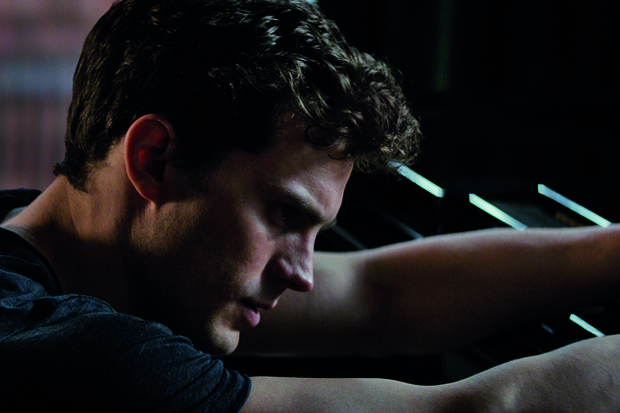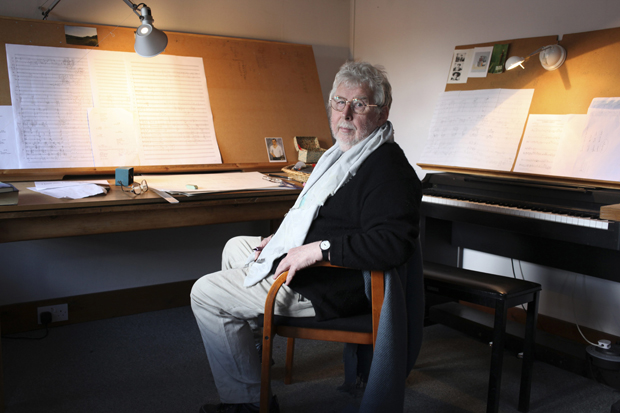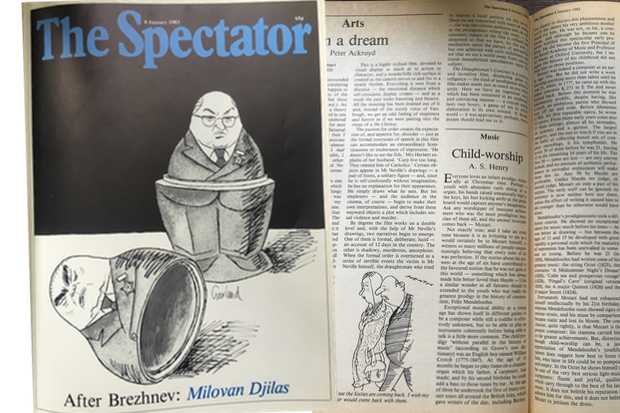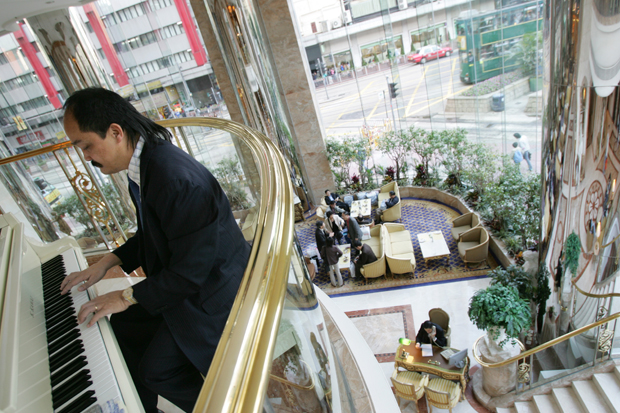One of the most complete bars to the authentic performance of both baroque opera and some renaissance polyphony is the current unavailability of castrati. There isn’t much to be done about it of course, but we might regret that we can no longer hear a sound which, at its best, fascinated all who did hear it. And we don’t know what that sound was. The two famous and unique recordings of Alessandro Moreschi, made in old age in 1902 and 1904, give us some clues, but can hardly represent the sound of the greatest 18th-century practitioners.
There are some pointers in contemporary reports. Gounod went to the Sistine Chapel in 1839 and got hooked on the sound of Palestrina being sung by a choir that included castrati: ‘This austere, ascetic, passionless music, with an intensity of contemplation that bordered on ecstasy,’ he wrote, going on to refer to the ‘firm attack, verging on harshness of those special voices …I returned again and again until at last I could not stay away’. I would give anything to hear Palestrina sung like that — it might explain much about what inspired him that we cannot understand. And of course there are many reports from the 18th-century heyday, though often the words used to describe sound are as confusing as words used to describe taste, as wine lovers will know. In 1755 Roger Pickering wrote: ‘Farinelli drew every Body to the Haymarket. What a Pipe! What Modulation! What Extasy to the Ear!’ This kind of adulation came from the fact that training for castrati was uniquely arduous, the logic being no doubt that since the deed had been done they might as well make the most of it. If sufficiently talented, a castrato could make his debut in his mid-teens with a perfect technique and a voice of such flexibility and power that no woman or ordinary male singer could match it. And the money to be earned encouraged upwards of 4,000 poor families to castrate their sons annually in the 1720s and 30s.
This famed vocal prowess came from an increased breath capacity. The lack of testosterone allowed the skeleton to continue to grow beyond what was normal. Limbs would elongate. As would ribs. This was why castrati had such exceptional lung power. And flexibility. The child-sized vocal cords contributed to this. It made for a sound quite different from the voice of the adult female. However, a soprano range was not guaranteed — many of the most prominent castrati were in fact altos, whether because the snip came too close to the onset of puberty or from natural range. When 18th-century opera was being revived in the first wave of interest in authentic performance 30 years ago, the habit was to apportion the soprano castrato roles to tenors and the alto roles to falsettists. Nowadays, once the code of ‘men’ playing women disguised as men had been fully assimilated, it has become more common to hear coloratura sopranos taking the high castrato roles, though no one is pretending that either of these options is really reproducing the original effect. Eighteenth-century opera houses had a perfectly adequate supply of sopranos and countertenors, but chose a castrato for the main roles if they possibly could.
The leading castrati were international superstars as no one had been before, commanding fabulous fees and behaving as though they were on a par with royalty. Their decline began when women were fully accepted on the operatic stage, and as more modern notions of acceptable cruelty began to inform legal systems, though it wasn’t until 1903 that Pope Pius X finally banned them from the Sistine Chapel Choir. It took longer for church choirs to be rid of their castrati since women had never been an option in them — nor, strangely, in the Sistine Chapel Choir, had boy trebles. We must assume, even though euphemisms are used in the records to disguise what kind of singers they really were, that the top two parts in this iconic choir were sung in part by castrati as far back as the early 16th century.
The irony behind this story is that were a really good soprano castrato to hit the headlines today, he would without question become the most sought after and the richest singer of his time. Yes, we could experience for ourselves the horror, revulsion, prurient fascination and strange attraction towards these ‘capons’ — as the English had it — not to mention the wild admiration. And we could hear for ourselves that eerie, agile, sexily sexless tone of voice which the greatest composers of the period, including Handel and Gluck, wrote for. What is it worth?
Got something to add? Join the discussion and comment below.
Get 10 issues for just $10
Subscribe to The Spectator Australia today for the next 10 magazine issues, plus full online access, for just $10.
You might disagree with half of it, but you’ll enjoy reading all of it. Try your first month for free, then just $2 a week for the remainder of your first year.













Comments
Don't miss out
Join the conversation with other Spectator Australia readers. Subscribe to leave a comment.
SUBSCRIBEAlready a subscriber? Log in